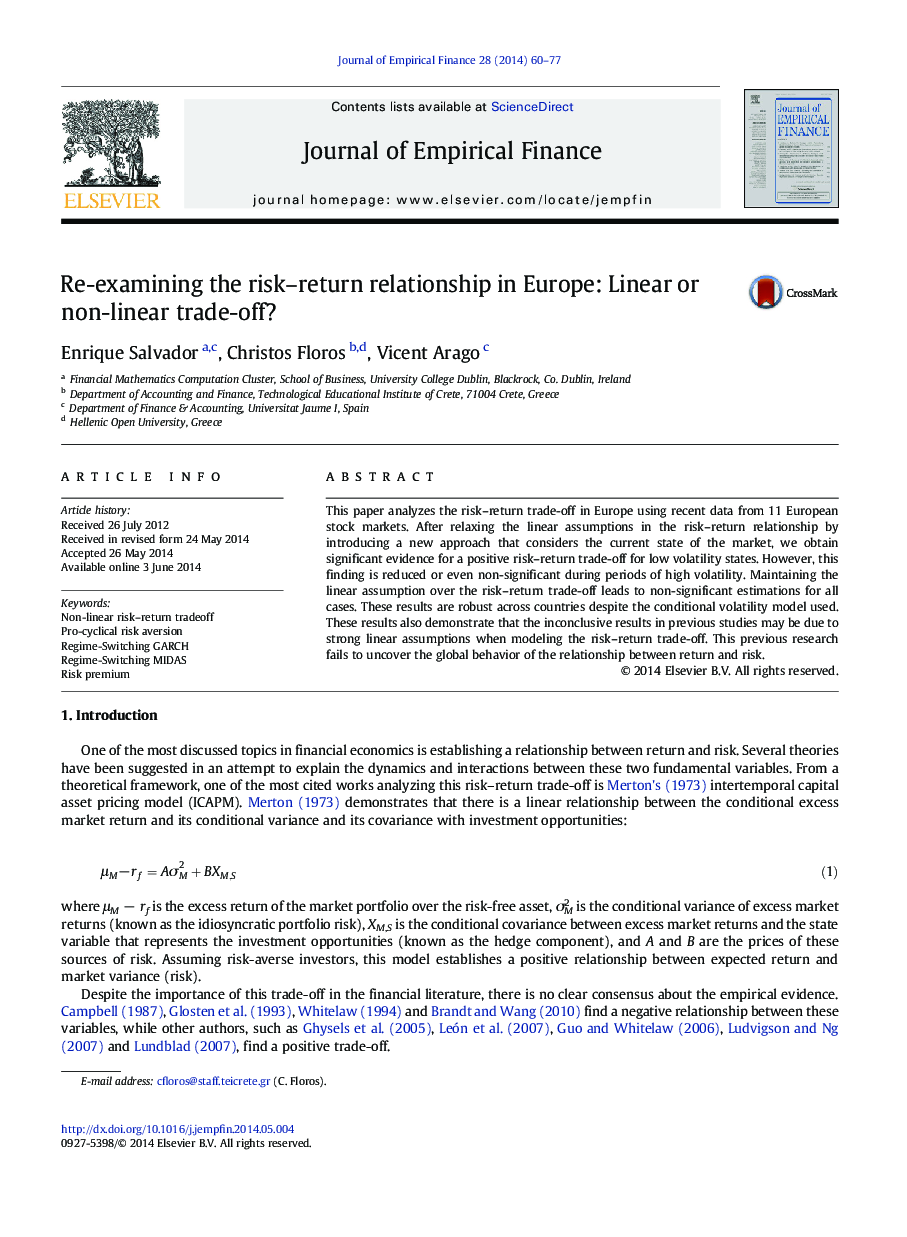| Article ID | Journal | Published Year | Pages | File Type |
|---|---|---|---|---|
| 958748 | Journal of Empirical Finance | 2014 | 18 Pages |
•We analyze the risk–return trade-off using data from 11 European stock markets.•Regime-Switching models provide positive evidence for low volatility states.•Linear assumption over this relationship leads to non-significant estimations.•Controversial results in previous studies may be due to strong linear assumptions.
This paper analyzes the risk–return trade-off in Europe using recent data from 11 European stock markets. After relaxing the linear assumptions in the risk–return relationship by introducing a new approach that considers the current state of the market, we obtain significant evidence for a positive risk–return trade-off for low volatility states. However, this finding is reduced or even non-significant during periods of high volatility. Maintaining the linear assumption over the risk–return trade-off leads to non-significant estimations for all cases. These results are robust across countries despite the conditional volatility model used. These results also demonstrate that the inconclusive results in previous studies may be due to strong linear assumptions when modeling the risk–return trade-off. This previous research fails to uncover the global behavior of the relationship between return and risk.
